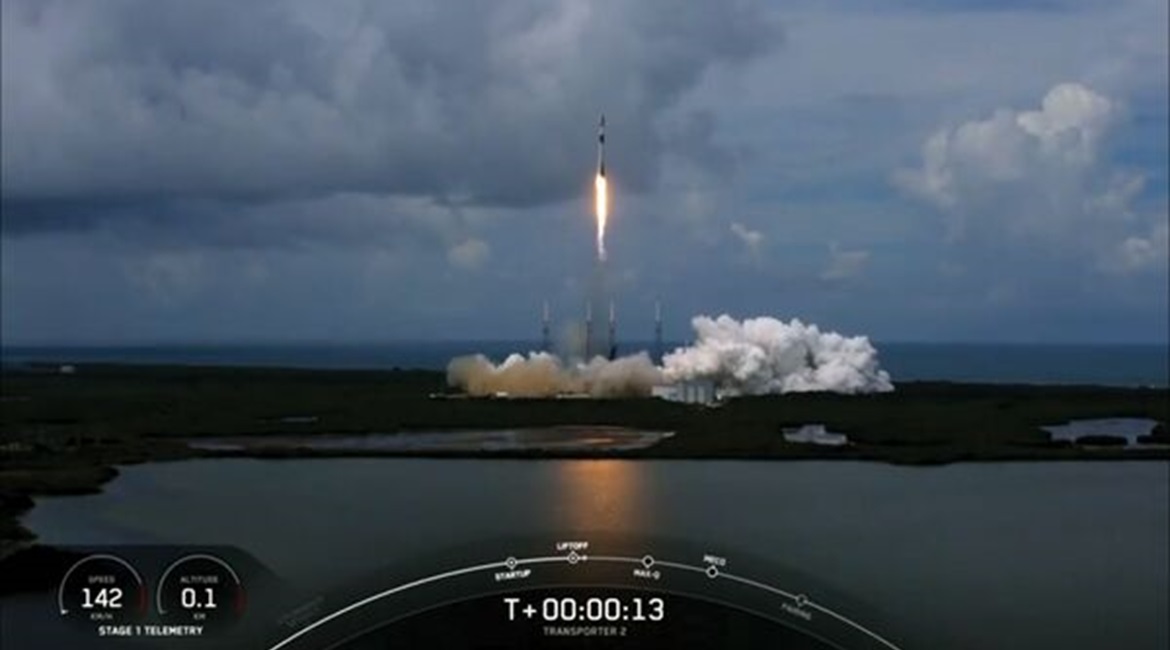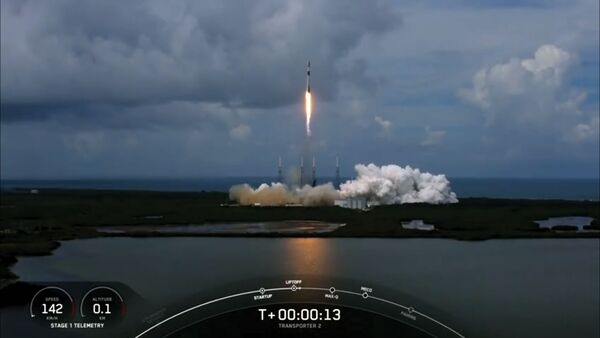
The Royal Thai Air Force's (RTAF's) second Earth-observation satellite, Napa-2, was launched into space on 30 June from Cape Canaveral Space Force Station in Florida aboard a Falcon 9 rocket from aerospace company SpaceX.
The ‘6U' CubeSat, which measures 20 × 10 × 34.05 cm, was one of 88 satellites carried by the two-stage rocket that day as part of SpaceX's ‘Transporter-2' dedicated rideshare mission.

A screengrab from video footage released by SpaceX on 30 June showing the launch from Cape Canaveral of a Falcon 9 rocket carrying 88 satellites, including the RTAF's second Earth-observation satellite. (SpaceX)
Similar to the Napa-1 (meaning ‘Firmament-1' in Thai) satellite, which was launched into orbit on 3 September from the Guiana Space Centre in French Guiana aboard an Arianespace Vega rocket, Napa-2 is also expected to observe and monitor Thai air space for defence and national security purposes.
That said, both nanosatellites can also be used for other purposes, including to monitor water resources and air quality, and to help respond to natural disasters such as fires, floods, earthquakes, and landslides, according to the RTAF.
Netherlands-based company Innovative Solutions In Space (ISISPACE), which designed and built both satellites, noted that Napa-2 is equipped with a ‘Simera Sense Multiscape Imager' featuring seven visual and near-infrared (VNIR) bands, with a ground sampling distance of 5 m to improve its Earth-observation capabilities.
Looking to read the full article?
Gain unlimited access to Janes news and more...




